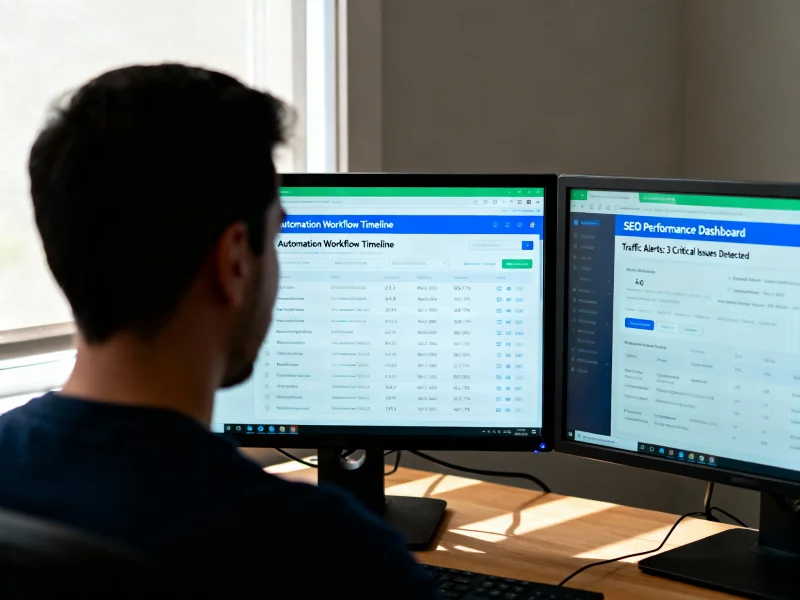Personalized Email Marketing: Enhancing Customer Connections Through Tailored Campaigns (Personalized Email, Customer Segmentation)
Are you tired of sending out generic and impersonal emails to your entire email list? Do you want to increase customer engagement and build stronger connections with your audience? Personalized email marketing may be the solution you need. By tailoring campaigns to individual customers based on their interests and behavior, personalized email marketing can lead to higher open rates, click-through rates, and ultimately, sales.
In this article, we will explore the importance of personalization in email marketing and how understanding customer segmentation can help you create tailored campaigns that resonate with your audience. We will also provide best practices for implementing personalized email marketing strategies and examples of successful campaigns from top brands. With this information at your fingertips, you'll be on your way to mastering the art of personalized email marketing and enhancing customer connections through tailored campaigns.
The Importance of Personalization in Email Marketing
You can't afford to ignore the importance of personalization in your email marketing campaigns if you want to truly connect with your customers. Personalized emails have higher open and click-through rates than generic ones because they speak directly to the recipient's needs and interests. By using data such as purchase history, browsing behavior, and demographic information, you can tailor your messages to each individual customer.
Moreover, personalized emails help build trust and loyalty with customers because they feel understood and valued by your brand. They are more likely to engage with your content, make a purchase, and recommend your products or services to others. In fact, research shows that 74% of marketers say targeted personalization increases customer engagement. Therefore, it's essential that you invest time and resources into creating personalized email campaigns that resonate with your audience.
Understanding customer segmentation is the next step in crafting effective personalized email campaigns.
Understanding Customer Segmentation
When it comes to understanding customer segmentation, there are three key points to keep in mind. First, you need to know the different types of segmentation that exist and which ones will work best for your business. Second, collecting and analyzing data is crucial in order to create effective segments. Finally, creating customer personas based on these segments will help you tailor your marketing efforts even further and truly connect with your audience. By following these steps, you can ensure that your email marketing campaigns are more personalized and effective than ever before.
Types of Segmentation
By segmenting your customer base, you can create targeted campaigns that resonate with each individual's unique preferences and needs, fostering a deeper connection with your audience. There are four types of segmentation that you can use to divide your customers into groups based on common characteristics:
- Demographic segmentation - dividing customers based on age, gender, income, education level, and other demographic factors.
- Geographic segmentation - dividing customers based on location such as city, state or country.
- Psychographic segmentation - dividing customers based on their personality traits, values and interests.
- Behavioral segmentation - dividing customers based on their buying behavior such as frequency of purchase or product usage.
By utilizing these types of segmentation, you can tailor your email marketing campaigns to specific groups of individuals who share similar characteristics and increase the likelihood of conversion rates. As you move towards creating personalized emails for each segment of your audience it's important to start collecting and analyzing data to gain insights into what works best for each group before crafting a targeted message that will resonate with them.
Collecting and Analyzing Data
Collecting and analyzing data is crucial for understanding your audience and creating targeted campaigns that resonate with their unique needs and preferences. By leveraging various data sources such as customer surveys, website analytics, social media insights, and purchase history data, you can gain valuable insights into your customers' behavior patterns, purchasing habits, interests, and pain points. This information can then be used to segment your audience into specific groups based on shared characteristics or behaviors.
Once you have segmented your audience, it's time to analyze the data further to identify trends and patterns that will allow you to tailor your email campaigns accordingly. For example, if you notice that a particular group of customers tends to purchase more high-end products than others, you might want to send them emails featuring luxury items or promotions on premium products. By using data-driven insights like this to personalize your email marketing campaigns, you can increase engagement rates and drive revenue growth. With this in mind, it's important to start creating customer personas that reflect the different segments of your audience.
Creating Customer Personas
Creating customer personas can help you truly understand and connect with your audience on a deeper level, resulting in more meaningful relationships and higher customer satisfaction. By gathering data on your customers' demographics, behaviors, preferences, and pain points, you can identify patterns and create personas that represent different segments of your audience. These personas are fictional characters that embody the traits of each segment and help you see your customers as real people with unique needs.
With customer personas, you can tailor your email marketing campaigns to specific groups of people instead of sending generic messages to everyone on your list. For example, if one persona represents busy professionals who value time-saving solutions, you could send them emails promoting products or services that simplify their lives. By doing this, you show that you understand their needs and offer relevant solutions they may not have considered before. This approach can increase open rates, click-through rates, conversions, and loyalty because it shows that you care about what matters to them rather than trying to sell them something they don't need.
Tailoring Campaigns to Customer Interests
Discover what interests your customers and tailor your email campaigns to their individual preferences, creating a personalized experience that will keep them engaged and coming back for more. When you segment your audience based on their interests, behaviors, and past purchases, you can create targeted email campaigns that are more likely to resonate with them. Here are three ways to tailor your campaigns to customer interests:
- Use dynamic content: Dynamic content allows you to create different versions of an email campaign that display different content based on the recipient's preferences or behavior. For example, if a customer has shown interest in a particular product category, you can include images and copy related to that category in their email.
- Send personalized recommendations: Based on a customer's purchase history or browsing behavior, you can send personalized product recommendations via email. This not only shows that you understand their preferences but also provides valuable information they may be interested in purchasing.
- Create exclusive offers: By offering exclusive promotions or discounts based on a customer's past purchases or interests, you can incentivize them to make another purchase while also making them feel valued as a loyal customer.
By tailoring your email campaigns to customer interests, you can increase engagement rates and drive sales. However, there are best practices for achieving success with personalized email marketing beyond just targeting specific segments of customers.
Best Practices for Personalized Email Marketing
When it comes to making your emails feel more authentic and engaging, there are a few best practices you should keep in mind. Firstly, make sure to personalize the subject line and email content with the recipient's name or other relevant information. This can be done easily through email marketing platforms that allow for personalized fields.
Secondly, segment your audience based on their behavior and interests to tailor your message accordingly. For example, if a customer has previously purchased products related to fitness, send them an email promoting new workout gear or healthy snacks. By utilizing these best practices, you can increase open rates and engagement with your audience through personalized email marketing campaigns.
Now that you understand the best practices for personalized email marketing, let's dive into some examples of successful campaigns that have utilized these strategies effectively.
Examples of Successful Personalized Email Marketing Campaigns
You'll be amazed by how some companies have used the power of personalization to create email campaigns that truly resonate with their audience. Here are some examples of successful personalized email marketing campaigns:
- Starbucks: The coffee giant sends out personalized emails based on each customer's purchase history and preferences. For example, if a customer regularly orders iced drinks, they may receive an email promoting new iced drink flavors. This strategy has led to increased engagement and sales for Starbucks.
- Spotify: The music streaming platform creates customized playlists for each user based on their listening habits. Spotify then sends out emails featuring these playlists along with recommendations for similar artists or genres. This approach has helped Spotify establish a deeper connection with its users and encourage them to continue using the platform.
By tailoring their email campaigns to individual customers, these companies were able to create a more meaningful experience that resonated with their audience. As a result, they were able to strengthen their relationship with customers and drive business growth through increased engagement and sales.
Frequently Asked Questions
What are common mistakes to avoid when implementing personalized email marketing?
To avoid common mistakes when implementing personalized email marketing, focus on quality over quantity. Ensure your data is accurate, segment your audience effectively, and personalize content that adds value to each recipient's experience.
How can businesses effectively measure the success of their personalized email marketing campaigns?
To measure your personalized email marketing campaign's success, track metrics like open rates, click-through rates, and conversion rates. Analyze customer feedback and behavior to refine future campaigns continuously. Use A/B testing to optimize results.
What are some creative ways to personalize email content beyond just using the recipient's name?
To personalize email beyond the recipient's name, consider using location-specific imagery or language, tailored product recommendations based on their purchase history, or a personalized subject line referencing their recent actions. Experiment and track engagement to find what resonates best with your audience.
How can businesses balance personalization with privacy concerns?
To balance personalization with privacy, you can limit the data collected and be transparent about your practices. Only use information that customers willingly share. Offer opt-out options and secure their data properly.
What are some examples of unsuccessful personalized email marketing campaigns and what can be learned from them?
Unsuccessful personalized email campaigns often result from poor segmentation, lack of personalization, or ignoring privacy concerns. Learn from these mistakes by prioritizing data accuracy and relevance to build trust with customers.
Conclusion
In conclusion, personalized email marketing is a powerful tool that can help you enhance customer connections and drive engagement. By segmenting your audience and tailoring campaigns to their interests and preferences, you can provide valuable content that resonates with recipients and fosters loyalty. Best practices for personalized email marketing include using dynamic content, personalizing subject lines and greetings, optimizing for mobile devices, and testing different strategies to optimize results.
Successful examples of personalized email marketing campaigns include those from brands like Netflix, Amazon, and Spotify. These companies use data-driven insights to deliver customized experiences that meet the needs of their customers. By following these best practices and learning from successful examples, you can create effective personalized email campaigns that strengthen your brand's relationship with its audience.









